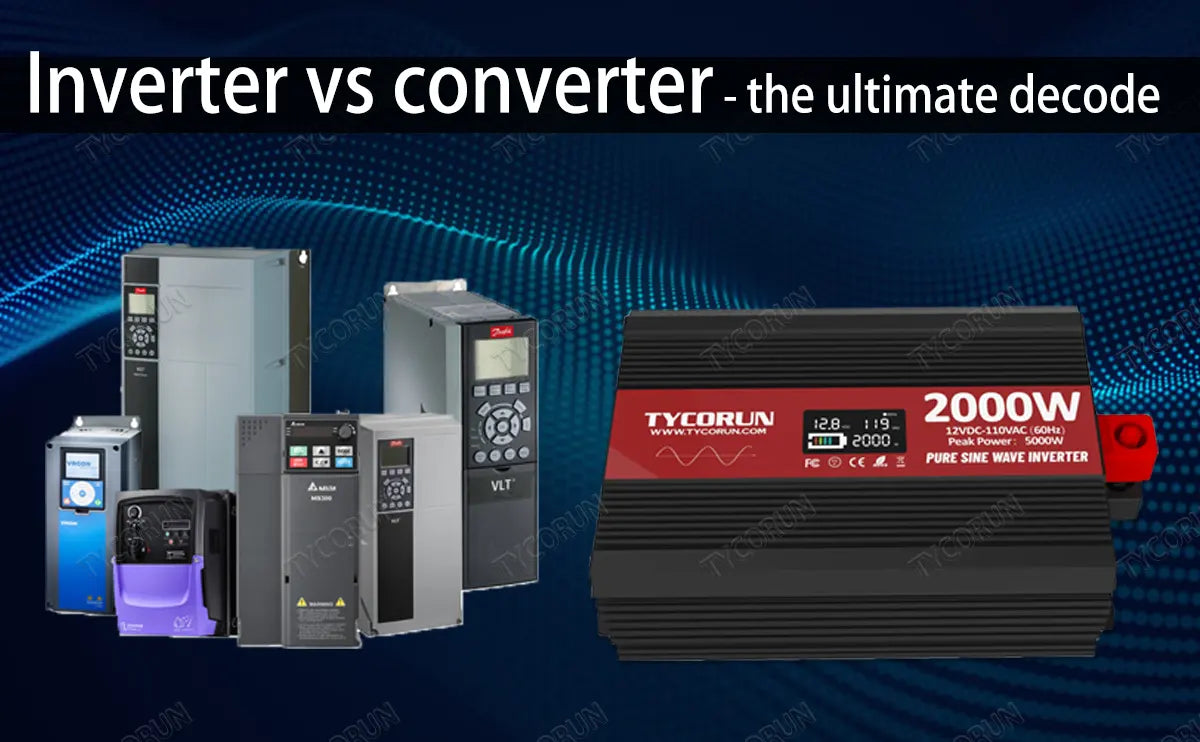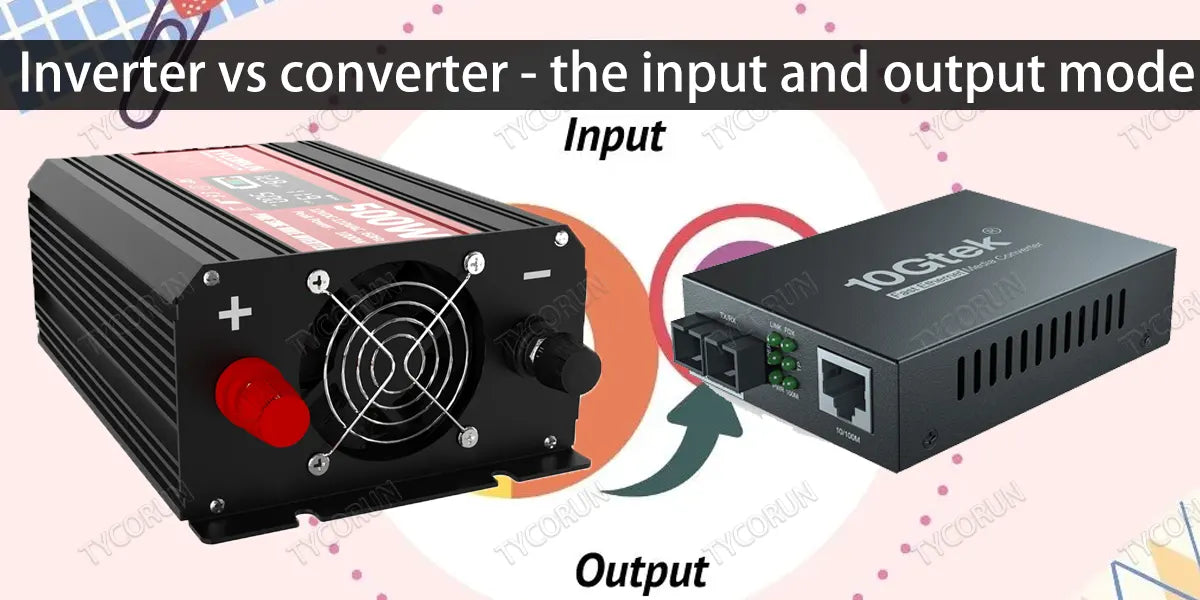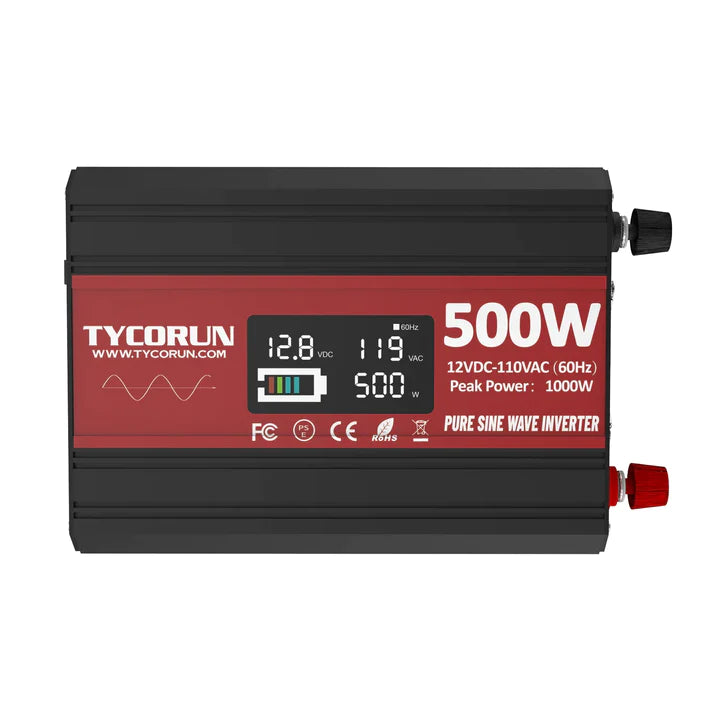
Main content:
The inverter mainly converts direct current into alternating current, and converters have a wider range of uses, which can convert various electrical characteristics such as voltage, current, frequency, and phase to meet the needs of various electrical equipment.
The inverter vs converter in power electronics, and their roles, implementations, and areas of use are different. In practice, it is necessary to select the right device according to the specific requirements and learn the comparison of inverter vs converter.
1. What is an inverter
An inverter is an electronic device that converts direct current into alternating current. It can output electrical energy from DC power to alternating current, and is commonly used in power generation systems such as solar panels and wind turbines, as well as a power supply for emergency power supplies, UPS power supply, and automotive electronics.
Its main function is to convert a smooth DC power supply into an AC power supply with adjustable frequency and adjustable amplitude to meet the needs of various electrical equipment.
Inverters can be used to generate different types of alternating current, such as sine, square, or rectangular waves. In short, the main function of an power inverter 3000w is to convert direct current to alternating current, while a converter is used to convert between alternating current and direct current, or to change electrical parameters such as voltage, current, and frequency.
Click on the picture for product details of 500w inverter
Both inverters and converters are electronic devices used to convert one type of electrical energy into another, but inverters mainly convert direct current into alternating current, while converters have a wider range of uses to convert various electrical characteristics such as voltage, current, frequency, phase, etc.
2. What is a converter
A converter is a device that converts one signal into another. A signal is the form or carrier in which information exists. In automated instrumentation equipment and control systems, one signal is often converted into another with respect to a standard or reference quantity.
To connect the two types of instruments. As a result, converters are often an intermediate link between two instruments (or devices). The emergence of various types of converters has greatly expanded the scope of use of various instruments (devices). Make the automatic control system more flexible and adaptable.
The basic function of various types of converters is to convert information into a form that is convenient for transmission and processing, and it is required that the information is not distorted, distorted, delayed, etc. during the conversion process. Therefore, there are certain requirements for the linearity, input and output impedance matching and isolation of the converter:
- Linear properties
It is required that the output signal Y of the converter has a good proportional relationship with the input signal X, that is, Y=KX+A, where K and A are constants.

- Input impedance and output impedance
The converter's input and output impedances must match the input and output meters to achieve high conversion accuracy.
- Isolation characteristics
The input circuit, the output circuit and the power supply circuit should be isolated from each other in the DC potential, and the grounding points of the input circuit and the output circuit F should be separated to improve the anti-interference capability. The main difference between inverter vs converter is their function and the principle of application.
3. Inverter vs converter - the input and output mode
The 2000w inverter usually uses an AC power supply as input to generate a certain output voltage, while the converter usually uses a DC power supply as input to generate a certain output voltage.
In addition, the output voltage of inverters is usually fixed or adjustable, and their working principle is based on the conversion of direct current into high voltage alternating current through high frequency oscillations.

The output voltage of a converter can be constant or variable, and the magnitude and manner of the output voltage depends on the design and purpose of the converter.
4. Inverter vs converter - use cases
Inverters are often used in portable electronic equipment, solar power equipment, automotive electronic equipment, radios and other occasions that require AC power, such as factories, homes, field collection, etc.
Converters are widely used in electronic equipment, power management and automatic control, an d are used to realize power conversion, power management, signal transmission and data monitoring of electronic equipment.
5. Inverter vs converter - applications
Due to the different roles of inverters and converters, their application areas are also different. Inverters can be used in solar power systems, wind power systems, and UPS systems.
In the solar power generation system, the inverter can convert the direct current generated by the high efficiency solar panels into alternating current that meets the requirements of the power grid, realizing the connection between the solar power generation system and the power grid.
In wind power systems, inverters can also convert the direct current generated by the wind turbine into alternating current that meets grid requirements. In a UPS system, the inverter converts the direct current generated by the battery into alternating current to provide backup power supply for home for electronic devices.

Converters are used in a wide range of applications and can be used in a variety of applications in electronic circuits. For example, a converter commonly used in switching power supplies is a type of converter. The inverter in the motor drive is also a converter.
6. Conclusion
An inverter vs converter is not the same thing. An inverter is used to convert direct current into alternating current, while a converter can convert one voltage or current into another.
Although inverter vs converter both convert one power output into another, they have different input and output methods, use cases, and application areas. Mastering the difference between an inverter and a converter can give us more options and references when using power conversion equipment.
In conclusion, although inverters and converters are both power electronics, their roles and application areas are different. Understanding the differences and applications of inverters and converters can help us better understand how power electronics work and how to use them.
Related articles: UPS vs inverter, inverter for office use, top 10 solar inverters
